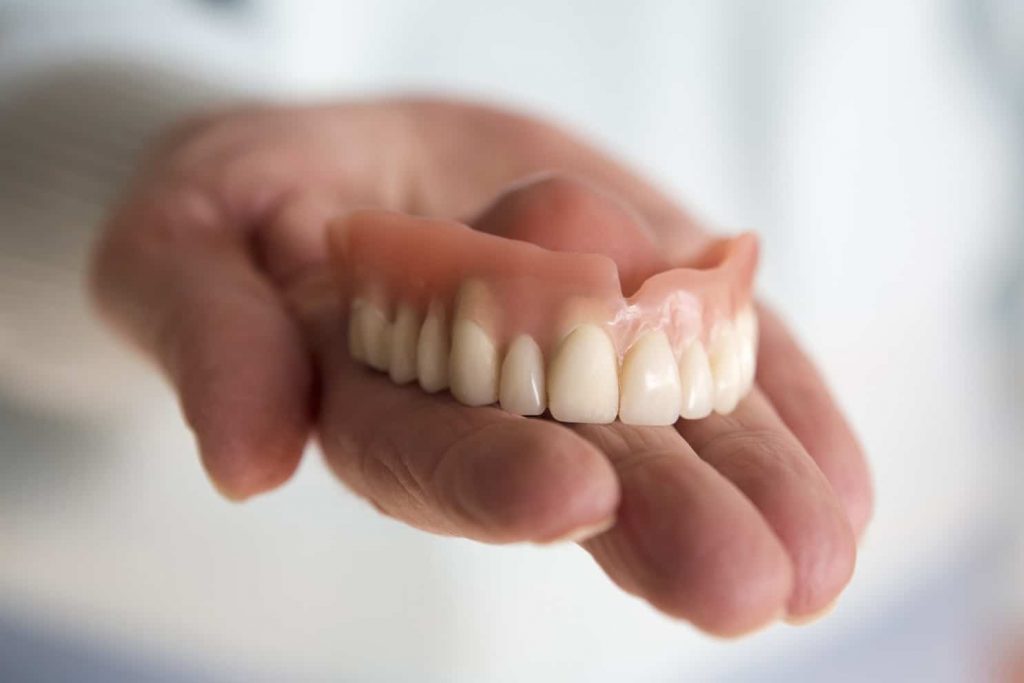Dentures
Whether tooth loss is accidental or intentional and caused by injury or decay, it absolutely must be quickly followed by tooth replacement. Not only can the gaps caused by missing teeth drive remaining teeth to shift out of alignment, but they can also cause cosmetic and functional discomfort. Fortunately, there are many workable tooth replacement options, including dentures.

Denture Basics
Dentures are removable replacement teeth that are normally used when many or all of the individual’s natural teeth are missing. There are two main types of dentures: complete dentures, which are used when all the individual’s natural teeth are missing, and partial dentures, which are used when many natural teeth are missing but some still remain.
Complete dentures are available as either immediate or conventional dentures. Immediate dentures are made prior to removal of remaining teeth, and can be used immediately after these teeth are removed.This can be highly convenient for the individual because they will not have to get by without teeth for any length of time. However, this convenience does have a price, since the individual’s bones and gums tend to shrink as they heal, which means that their immediate dentures will not fight properly throughout this process unless they are regularly adjusted. Immediate dentures are therefore usually recommended only as a temporary solution until conventional dentures can be placed in the mouth. Conventional dentures are normally placed in the mouth anywhere between two to three months after remaining teeth are removed, as they cannot go in until after the gum tissue has healed.
Partial dentures are composed of replacement teeth which are attached to a plastic base. This plastic base is normally pink or gum colored, and can be removed from the mouth–unlike a fixed bridge.
Once you have discussed your options with your dentist and determined whether partial or complete dentures are appropriate for you, your dentist will:
- Make impressions of your jaw and take various measurements to determine the appropriate size and shape of your dentures.
- Create denture models for you to try so that shape, color and fit can be verified prior to the creation of your final dentures.
- Cast your final dentures based on the information obtained from your denture models.
- Make adjustments as needed to ensure your dentures fit and work in the way they should.
Dentures can take some time to get used to, especially since your tongue and cheek muscles will need to get used to holding them in place and not accidentally pushing them out. You may find that dentures change how you speak, and this can take time and patience to resolve. You may have to learn how to prevent your dentures from slipping while talking, but if they make clicking noises you need to see your dentist for an adjustment. You will also want to take it easy as you learn how to eat with your new dentures–avoiding hard or sticky foods and chewing small bites of soft foods slowly. You may experience some minor irritation or soreness as you learn to use new dentures, but they should never be painful. If they do become painful, or if the soreness or irritation associated with their use fails to fade after a short time, contact your dentist right away.
Partial or complete dentures can be used as either a temporary or permanent alternative to dental implants or fixed bridges. There are various benefits and drawbacks to each of these options, which is why it is always best to speak with your dentist prior to deciding which tooth replacement option is best for you.
For more information about dentures, contact Dr. Nurminsky today.

